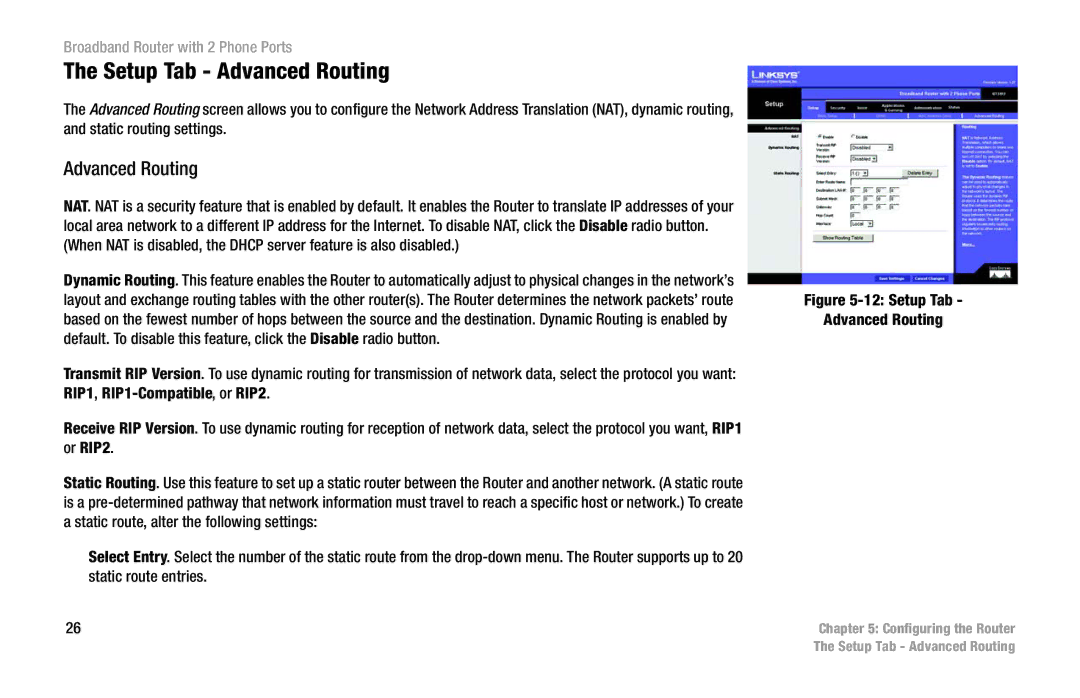
Broadband Router with 2 Phone Ports
The Setup Tab - Advanced Routing
The Advanced Routing screen allows you to configure the Network Address Translation (NAT), dynamic routing, and static routing settings.
Advanced Routing
NAT. NAT is a security feature that is enabled by default. It enables the Router to translate IP addresses of your local area network to a different IP address for the Internet. To disable NAT, click the Disable radio button. (When NAT is disabled, the DHCP server feature is also disabled.)
Dynamic Routing. This feature enables the Router to automatically adjust to physical changes in the network’s layout and exchange routing tables with the other router(s). The Router determines the network packets’ route based on the fewest number of hops between the source and the destination. Dynamic Routing is enabled by default. To disable this feature, click the Disable radio button.
Transmit RIP Version. To use dynamic routing for transmission of network data, select the protocol you want: RIP1,
Receive RIP Version. To use dynamic routing for reception of network data, select the protocol you want, RIP1 or RIP2.
Static Routing. Use this feature to set up a static router between the Router and another network. (A static route is a
Select Entry. Select the number of the static route from the
26
Figure 5-12: Setup Tab -
Advanced Routing
Chapter 5: Configuring the Router The Setup Tab - Advanced Routing
